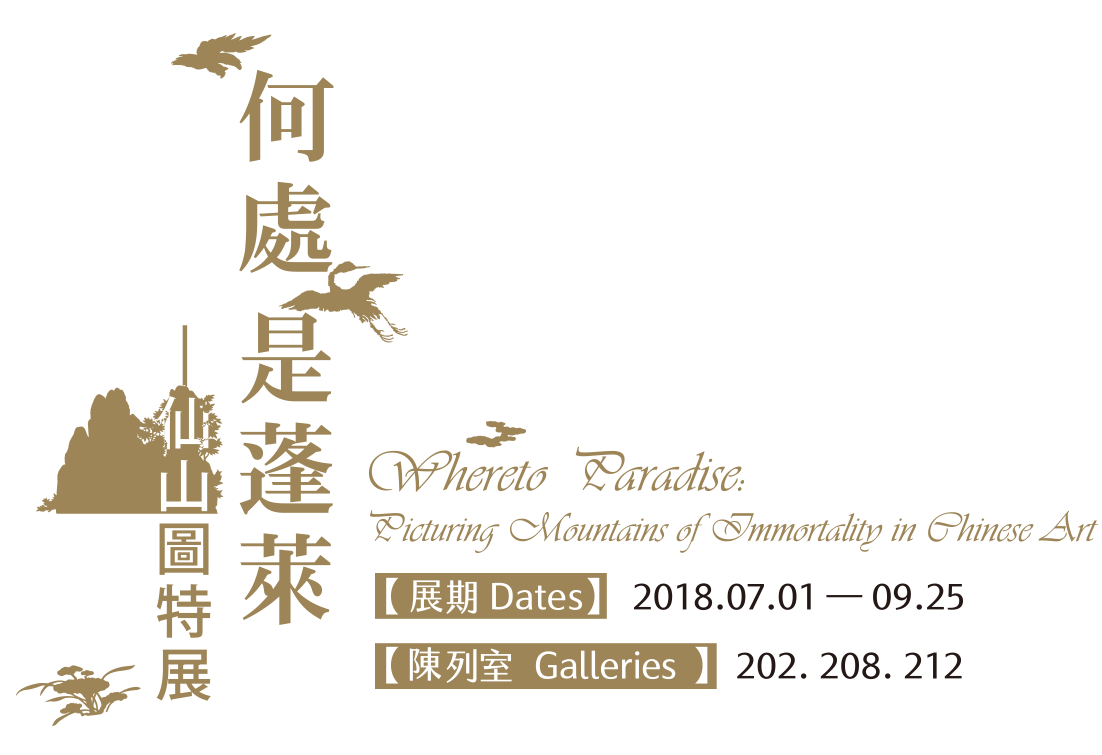Mount Penglai, the so-called island of immortals, and the sacred Mount Kunlun are two paradises of immortality familiar to many in Chinese mythology. According to Records of the Grand Historian from the first century BCE, rulers previously in the Warring States period had sent people in search of the three spirit mountains of "Penglai, Fangzhang, and Yingzhou," while Mount Kunlun had also been described in the ancient Classic of Mountains and Seas as a spirit realm. These were said to be places where immortal sages resided and lands of fabulous wealth with mythical beasts and exotic plants. Later, in the Six Dynasties period to Tang dynasty, the rise and increasing popularity of Daoism spurred followers of this faith to see mountains in existing maps as those of immortals. In turn, this led to the legend of "grotto heavens and blessed lands," making the world of immortals all the more palpable and real for people. As for those in search of immortality, famous mountains and grotto abodes were not just sites for finding medicinal plants, refining elixirs, and learning the practices of becoming immortal, they became a medium for encountering immortals and ascend to the realm of eternal life.
Many works of Chinese landscape painting that survive today deal with or refer to lands of the immortals, and paintings from the Song, Yuan, Ming, and Qing dynasties in the National Palace Museum collection present the particularly rich and varied facets to these mountains of immortality. This exhibition includes a selection of thirty works divided into three parts: "Floating Mists of Immortal Realms," "Different Abodes of Immortality," and "Prolonging Life and Becoming an Immortal."
The first part of the exhibit, "Floating Mists of Immortal Realms," deals with the fabulous beauty of immortal mountain palaces, including such places of paradise as Kunlun, Penglai, Fanghu, and Yingzhou. The works include a Song dynasty tapestry of "Hall in Mountains of the Immortals," Wen Boren's "Fanghu from the Ming dynasty, and "Gathering of Immortals at Penglai" attributed to the Song painter Zhao Daheng. The second section, "Different Abodes of Immortality," focuses on grotto paradises and blessed lands to represent the mystery of sacred mountains and immortal grottoes. Related to the reverence of Daoist painters for sacred mountains, representative examples include "Mountain Halls of the Immortals" attributed to the Five Dynasties painter Dong Yuan and "Sacred Mountains and Precious Groves" by the Yuan artist Fang Congyi. These two are "restricted" works on display in rotation. Finally, the third part on "Prolonging Life and Becoming an Immortal" reflects the quest for immortality with sometimes unconventional methods and manifestations, as seen in such works as "Three Immortals Receiving the Text" attributed to the Song artist Yan Wengui and "Dogs and Chickens amid the Clouds" by Cui Zizhong of the Ming. This exhibition thus offers audiences a divine journey through ancient works to the mountains of immortals and, in the process, a greater understanding of their cultural significance.
